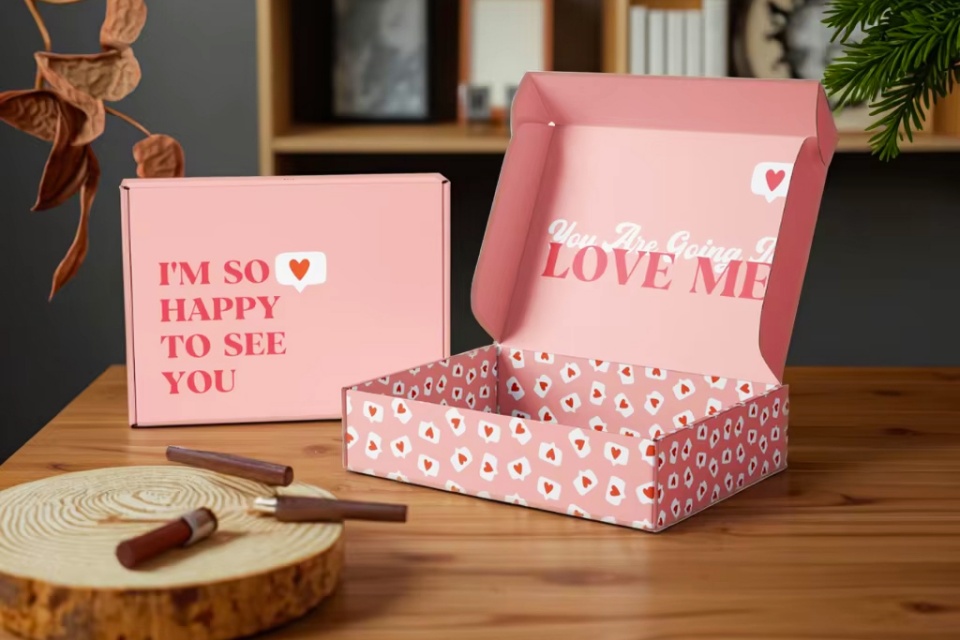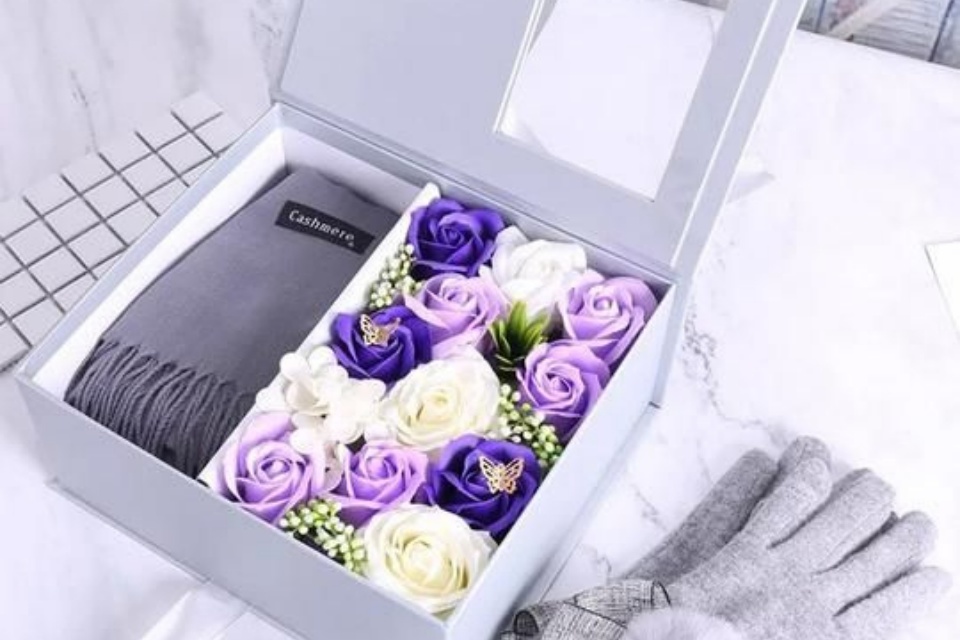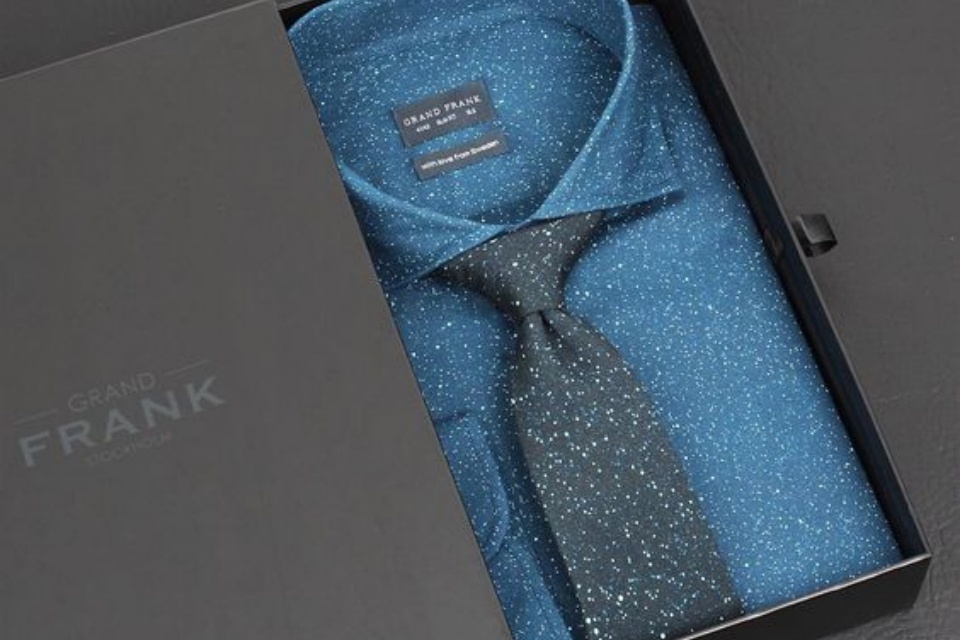Our News
Luxury Apparel Packaging For High-End Fashion
Luxury Apparel Packaging For High-End Fashion
Summary
Luxury apparel packaging for high-end fashion refers to the specialized packaging used by premium brands to enhance the presentation and protection of apparel, while simultaneously reinforcing brand identity and consumer experience. This sector has evolved significantly since the early 20th century, transitioning from mere functionality to a crucial aspect of luxury branding that conveys quality, exclusivity, and storytelling. As consumer expectations have grown, so too has the emphasis on sophisticated design elements and sustainable practices, making luxury packaging a focal point in the competitive fashion landscape.
The evolution of luxury packaging is closely tied to broader trends in consumer behavior and environmental awareness. Initially focused on functionality, luxury packaging began to reflect the heritage and craftsmanship of brands in the mid-20th century. By the late 20th century, innovations in design and materials led to an emphasis on aesthetics and the overall unboxing experience. Today, brands are increasingly prioritizing sustainability, adopting eco-friendly materials and practices in response to consumer demand for responsible consumption.
Key features of luxury apparel packaging include high-quality materials, elegant aesthetics, and meticulous design details, all of which contribute to an immersive brand experience. Techniques such as embossing, foil stamping, and the use of premium textiles enhance both visual and tactile appeal, creating a sensory connection between consumers and products. Furthermore, packaging serves as a critical marketing tool, influencing consumer perceptions and fostering emotional connections that drive brand loyalty.
However, the luxury packaging sector is not without its controversies, particularly regarding the environmental impact of traditional packaging practices. The reliance on non-biodegradable materials and single-use plastics has raised concerns about sustainability and pollution, prompting a push towards more responsible packaging solutions. As brands navigate these challenges, transparency and genuine commitment to sustainability have become paramount in maintaining consumer trust and brand integrity.
Historical Background
The history of luxury apparel packaging can be traced back to the early 20th century, where the emphasis was primarily on functionality and protection. In 1922, Max Kaneff established the original Ar-Kay Printing on Manhattan's Lower East Side, which marked a pivotal moment in the evolution of packaging. After immigrating to the United States at the age of 13 and later transitioning to producing folding cartons for beauty brands, Kaneff's company laid the groundwork for what would become a significant sector in luxury packaging.
As the luxury market began to flourish throughout the mid-20th century, packaging evolved from mere protection to a vital component of brand identity. Luxury brands recognized that packaging could convey not only the product's quality but also the brand's story and heritage. Heritage became an essential pillar in the luxury sector, as it encapsulated the unique craftsmanship and traditions that brands leveraged to enhance their appeal. This shift meant that brands without a strong heritage needed to focus on lifestyle marketing and celebrity endorsements to resonate with consumers.
The late 20th and early 21st centuries witnessed a transformation where packaging began to reflect not just the luxury status of products but also the growing consumer expectations for sustainability and style. Innovations in materials and design led to the incorporation of high-quality materials and bespoke construction, elevating the unboxing experience to a new level of sophistication. Brands began adopting eco-friendly packaging solutions, responding to increasing environmental consciousness and the demand for responsible consumer practices.
Today, the packaging of luxury apparel continues to evolve, integrating contemporary design elements and sustainability into its framework. The historical trajectory of luxury packaging reflects a broader narrative of changing consumer values, where the interplay of heritage, innovation, and environmental responsibility shapes the industry's future.
Design Elements
Key Features of Luxury Apparel Packaging
Luxury apparel packaging is designed to enhance the overall brand experience and evoke a sense of exclusivity and sophistication.
Material Selection
The choice of materials is paramount in conveying quality. High-end brands typically opt for premium materials such as textured paper, rigid board, velvet, and leather. These materials not only ensure durability but also enhance the tactile experience, making the packaging feel indulgent to the consumer. For instance, velvet linings in jewelry packaging elevate the perceived value, while thick paperboard is often used to project a sturdy and premium feel.
Elegant Aesthetics
Luxury packaging often employs refined color palettes and minimalist designs that highlight the product itself. Deep, rich colors such as black, gold, and emerald green are frequently used to evoke a sense of luxury and exclusivity. Signature colors, like Tiffany & Co.'s iconic robin egg blue, become closely associated with the brand and add to the emotional connection consumers feel. Simple, elegant designs with subtle detailing can transform an ordinary package into a work of art, capturing attention while reinforcing brand identity.
Typography and Branding
Typography plays a crucial role in luxury packaging design. Fonts are selected to align with the brand's personality and values, conveying the intended tone and enhancing brand identity. For example, sleek serif fonts can communicate sophistication, while playful sans-serif fonts may evoke a more casual vibe. Attention to typography not only improves readability but also creates visual interest, drawing consumers into the packaging experience.
Finishing Techniques
High-quality finishing techniques such as embossing, debossing, foil stamping, and matte or gloss coatings add visual depth and texture to luxury packaging. These elements enhance the sensory experience and can make a packaging feel more luxurious and refined. The smallest details, such as a custom logo embossed in gold foil or a silk ribbon, can further elevate the packaging and leave a lasting impression on consumers.
Functional Design
Beyond aesthetics, the shape and functionality of luxury apparel packaging also contribute to its appeal. Thoughtful designs can improve usability, making it easier for consumers to interact with the product. For example, packaging that incorporates features like magnetic closures or easy-pour spouts enhances the overall user experience while maintaining a sense of sophistication.
Branding and Marketing
Luxury apparel packaging serves as a crucial element in branding and marketing strategies, significantly impacting consumer perception and brand loyalty. It goes beyond mere functionality, acting as a powerful communication tool that conveys a brand's identity and values to its target audience. Packaging creates a sensory experience that not only protects the product but also enhances the overall consumer experience from the moment of discovery.
The Role of Packaging in Brand Identity
Packaging acts as a product's first impression, shaping how consumers perceive a brand at a glance. It embodies the brand's personality, visually conveying its essence through elements such as color schemes, typography, and materials. For luxury brands, using premium materials and elegant designs reinforces their commitment to quality and exclusivity, thus elevating the perceived value of the product. The interplay between packaging design and brand identity is symbiotic, as a well-crafted package can resonate deeply with consumers, enhancing brand affinity and encouraging repeat purchases.
Emotional Connection and Consumer Behavior
Emotional packaging design is particularly effective in fostering brand loyalty. By strategically utilizing graphic design, colors, and imagery, brands can evoke specific emotions and create a deep connection between the product and its consumers. The tactile and visual engagement involved in unboxing a luxuriously packaged item can stir feelings of excitement and delight, which not only enhances customer satisfaction but also influences their purchasing decisions. This emotional narrative is amplified in the digital age, where unboxing experiences shared on social media can significantly extend a brand's reach and market presence.
Leveraging Consumer Psychology
Understanding consumer psychology is vital for luxury apparel brands aiming to optimize their packaging strategies. Elements such as social proof, scarcity, and storytelling can be employed to create a more profound emotional impact on consumers. Brands that successfully align their packaging with these psychological triggers are more likely to foster trust and emotional connections, ultimately increasing customer loyalty and repeat purchases. By capturing the emotional essence of their target audience, luxury brands can craft packaging that not only stands out on the shelf but also resonates deeply with consumers' aspirations and identities.
Types of Luxury Apparel Packaging
Luxury apparel packaging encompasses a variety of high-quality materials and designs that enhance the presentation and protection of garments. The packaging not only serves functional purposes but also plays a crucial role in branding and consumer experience.
Rigid Boxes
Rigid boxes are a hallmark of luxury packaging, known for their sturdy construction and elegant presentation. Typically made from thick paperboard, these boxes are non-collapsible and provide substantial structural integrity, which enhances the perceived value of the contents within. They can be customized with luxurious materials such as hardboard, chipboard, or leather, and often feature high-end finishes like embossed logos or foil stamping, making them suitable for high-value items such as designer clothing and accessories.
Flexible Packaging
Flexible packaging, including pouches and bags, offers versatility while maintaining an appealing aesthetic. This type of packaging is crafted from non-rigid materials, allowing for creative shapes and sizes. Common options include resealable pouches and drawstring bags, which are often made from sustainable materials, thereby aligning with modern eco-conscious consumer preferences. Such packaging not only protects garments but also adds an element of convenience and reusability for customers.
Custom Luxury Apparel Boxes
Custom luxury apparel boxes are designed not just for protection but also for brand storytelling. These boxes can be created from eco-friendly materials like recycled cardboard or biodegradable plastics, catering to the growing consumer demand for sustainable packaging solutions. The design often incorporates unique features that reflect the brand's identity, such as personalized messages or limited edition designs, which can enhance the consumer's emotional connection to the brand.
Gift Bags
Luxury gift bags are typically made from high-quality paper or fabric, equipped with handles for easy carrying. These bags are frequently used for smaller items such as beauty products or accessories and are designed to be visually appealing, making them suitable for gifting occasions. The incorporation of custom branding elements, such as logos and taglines, can elevate the brand experience for consumers.
Tins and Tubes
Luxury packaging can also take the form of tins and tubes, which are often used for specialty items like fragrances or gourmet foods. Tins provide a robust and attractive option for packaging, while tubes, made from materials like cardboard or metal, offer a distinctive presentation for luxury apparel items. Both types can be customized to reflect the luxury nature of the products they contain.
Innovations and Trends
Sustainability and Eco-Friendliness
As consumer demand for environmentally responsible practices grows, the luxury apparel packaging industry is undergoing significant changes. Brands are increasingly adopting sustainable materials and practices to align with global initiatives, such as the 2016 Paris Agreement. Notable companies like Kering, the parent company of Gucci and Yves Saint Laurent, are leading the charge toward what is termed "eco-luxury." Kering has committed to reducing greenhouse gas emissions by 40% by 2035 and has launched initiatives like a circular hub in Italy to recycle luxury goods at scale. Furthermore, the use of innovative materials, such as grass-based "cardboard" and seaweed packaging, is gaining traction, reflecting a shift toward more eco-conscious options in luxury packaging.
Interactive and Engaging Packaging
Another emerging trend is the incorporation of technology into luxury packaging, which enhances consumer engagement. Interactive packaging, which includes elements such as QR codes or augmented reality, allows brands to create a more immersive experience for consumers. This trend is particularly appealing to younger, tech-savvy customers who appreciate a more interactive product experience. Such innovations not only captivate consumers but also provide valuable information, thereby increasing brand loyalty.
Design Aesthetics: Maximalism and Minimalism
The aesthetic approaches to luxury packaging are evolving, with both maximalist and minimalist designs gaining popularity. Maximalism emphasizes bold, vibrant designs that capture attention, while minimalism focuses on simplicity and elegance. This duality allows brands to appeal to a wide range of consumer preferences. For instance, JDO's redesign of Jing Healthcare No.1 reflects maximalist principles by showcasing a bespoke design inspired by traditional Chinese medicine, enhancing both aesthetic appeal and the perception of quality.
Quality and Craftsmanship
Quality remains a fundamental pillar in luxury packaging. The attention to detail in packaging construction is critical, with brands ensuring that every aspect—from the precision of corners to the durability of materials—meets high standards. This commitment to craftsmanship not only enhances the perceived value of the product but also assures consumers of their investment. Packaging that successfully combines quality with innovative design is essential for luxury brands aiming to maintain their status and appeal.
Future Outlook
Looking ahead, the luxury apparel packaging market is expected to grow, with predictions of a positive trajectory toward 2030. To capitalize on this growth, brands must rethink their packaging strategies, blending creativity with traditional luxury values. Embracing sustainability, technology, and a refined aesthetic will be crucial for brands seeking to enhance consumer experiences and stay relevant in a competitive market.
Environmental Considerations
The luxury fashion industry faces increasing scrutiny regarding its environmental impact, particularly concerning packaging materials and practices. With the textile value chain responsible for approximately 9% of annual microfibre pollution in oceans, the sector is a significant contributor to the ongoing plastic pollution crisis. As consumers become more eco-conscious, luxury brands are expected to commit to sustainable development by adopting environmentally friendly packaging solutions.
Challenges of Plastic Pollution
The reliance on single-use plastics in packaging significantly exacerbates the plastic pollution problem. With recycling rates for these materials estimated at less than 15%, due to inadequate infrastructure and limited market demand for recycled plastics, the issue remains critical. The use of non-biodegradable and non-compostable materials derived from fossil fuels contributes to greenhouse gas emissions and the proliferation of microplastics in the environment. Additionally, the complex global supply chains and lack of standardized recyclable packaging hinder efforts to establish a more sustainable approach to packaging in the luxury sector.
Innovations in Sustainable Packaging
To combat these challenges, luxury brands are increasingly turning to sustainable packaging options, such as materials made from recycled or biodegradable components. This not only signals a commitment to reducing ecological impact but also helps in creating job opportunities through community recycling initiatives. Brands can benefit from partnerships with organizations focusing on transforming plastic waste into valuable products, further enhancing their sustainability profile.
Innovative designs that blend functionality with eco-friendly materials are becoming essential in luxury packaging. By incorporating high-quality, sustainable materials that do not compromise on aesthetics, luxury brands can create memorable packaging experiences while promoting environmental responsibility. This approach not only meets consumer demand for luxury but also aligns with their values regarding sustainability.
Consumer Expectations and Brand Integrity
As eco-conscious consumers scrutinize packaging more than ever, luxury brands must ensure that their packaging reflects genuine sustainability efforts. Transparency in sourcing materials and clear communication of sustainable practices are crucial to avoid accusations of greenwashing. Brands need to provide verifiable information about their sustainability initiatives to build trust and loyalty among consumers.
Moreover, the incorporation of secondary functions into packaging—such as decorative or practical uses—can encourage consumers to repurpose packaging, thereby reducing waste. Collaborations with packaging manufacturers who prioritize sustainability can help luxury brands innovate in packaging solutions while maintaining the quality and exclusivity that defines their market position.
Categories
Latest News
Contact Us
Contact: Aaron Lee
Phone: +8613570866244
Tel: +8675529490260
Add: Li Songlang 2nd Industrial Zone,No.18,FengTang Rd,Guangming New District


